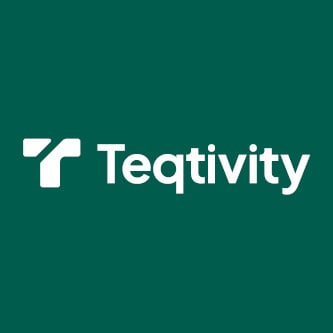Increasing the breadth of automated tasks can help finance teams stay nimble during periods of hypergrowth, Ashim Gupta, CFO of New York-based automation technology company UiPath, told CFO Dive.
That’s exactly what Gupta has sought to do: despite growing the company’s customer base from 100 customers to more than 10,000 customers in six years, the firm’s finance and accounting team remained flat — under 200 employees — as it automated a growing number of tasks.
“If you look at the headcount that we've needed, and the amount of infrastructure that was needed to scale… using our own platform, we were able to scale the company with minimal year-over-year investment in those roles,” he said in an interview at the company’s annual customer conference in Las Vegas, Nevada, on Tuesday. “We were able to add the automation as we grew and as the processes became more complex.”

UiPath, which went public in 2021 about 16 years after its founding, is known for its automation software used across industries, with financial services and healthcare being the two biggest it serves. The company competes in a field with a total addressable market of $65 billion, according to Gupta. A market leader, competitors include Automation Anywhere, SS&C Blue Prism and Microsoft.
The company reported a narrower net loss of $60.3 million in its fiscal second quarter ended July 31, compared to $120.37 million net loss in the year-earlier period. The company’s GAAP operating loss of $77.6 million included $102 million of stock-based compensation expense, Gupta said during the firm’s second-quarter earnings call. At the same time, UiPath reported a 25% increase to $1.3 billion in annual recurring revenue year over year.
The firm’s software helps automate many repetitive tasks typically performed manually. Since Gupta joined the company in 2017, his team scaled up automation efforts — using the company’s toolset — across several core finance and accounting tasks. In May, the company announced more than $50 million of cumulative cost avoidance through its business automation platform, and more than one million hours of time given back to the business.
The UiPath finance team’s internal automation trajectory evolved in three phases, Gupta said.
The company first began automating the transfer of data between various technology systems, including between Salesforce and NetSuite, and between procurement system Coupa and the company’s enterprise resource planning system. The team’s automation roadmap evolved to engaging people across business processes, including, for example, prompting workers to approve invoices.
The software will “go forward and inspect the system every day, see which approvals are pending, and actually reach out to the employee and contact and send them a reminder, and if they approve within that reminder, it would automate the approval,” Gupta said.
More complex automation
More recently, the company’s automation software is being used to compare documents and spot anomalies. With invoices, for example, it can spot patterns that look unusual and prompt employees to take action.
It’s also, from this quarter onwards, able to use large-language models to conduct variance analysis between documents. “It could compare what your spend was last quarter to the spend in the current quarter as well as look at what’s driving the difference, Gupta said. “That is an analytical job that is done by a person today,” he said.
The company is increasingly embedding AI into its automation tools, including a new capability announced this week called UIPath Autopilot, which is an AI assistant that guides users on building automations with minimal coding.
“For simple automations, you probably don't need to code but for more complex [efforts] it will give you a framework,” said Gupta.
The Ontario Municipal Employees' Retirement System (OMERS), a UiPath customer in Canada, is using the toolset to streamline the process for outgoing payments. This includes reviewing payment information to ensure the data fields are correct and complete.
“We run a lot of reports…to understand what we need to pay to our vendors,” said Vipin Jain, director of the Automation Centre of Excellence at OMERS. “Before the employee comes into work, the reports are ready for them to review, so they have time to make corrections,” thus shortening the review and approval time frames.
Prior to the introduction of automation software, sometimes the only way errors could be detected was when payments would not go through to the bank, he explained.
Mark Andrews, vice president of corporate technology at OMERS, said the objective of automation is to increase productivity, such that hours can be given back to employees who have more time for higher-value tasks.
Post-automation strategies vary
Gupta, who also emphasized productivity as a core objective of automation technology, noted that strategies are likely to vary among companies.
“Productivity comes in many forms,” he said. “With some customers as you create capacity with automation, do they decide to reduce the capacity of their employee base? Yes. Other companies choose to reallocate that capacity to higher-end work,” including analytics and customer-facing tasks.
Looking ahead, one of the biggest challenges for the company is to balance investments in product innovation with efficiency requirements that the current economic climate demands.
“We're in the early stages of what we see as a really large opportunity,” Gupta said. “The first challenge is ‘Are we investing enough?’ The second is ‘Are we investing enough in the right areas?’ And then the third piece is, ‘How do we ensure that we're also going to continue to drive efficiency and balance investment with cash flow in an environment with high interest rates?’”
The company’s non-GAAP research and development expenditures increased 20.1% this year compared to 2022, he noted.












